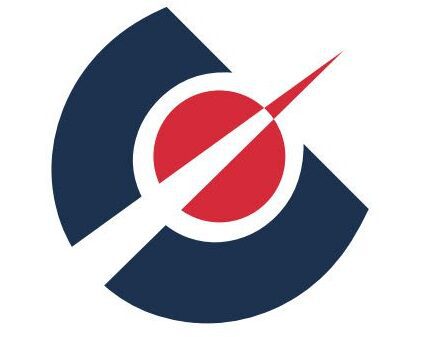
Military veterans are known for their dedication, commitment, and loyalty. In fact, when they transition from military careers to civilian roles, they remain with their initial company 8.3% longer than nonveterans. What’s more, they’re 39% more likely to earn promotions sooner than nonveterans, according to the Veteran Opportunity Report.
Last month, in August 2021, the unemployment rate among veterans was 3.8%, down from 3.9% in July and 7.3% in 2020. Military hiring is on the rise with many companies instituting veteran hiring programs, veteran hiring preferences, and HR business partners who specialize in hiring veterans. Does your organization support veteran hiring? Comment below.
The August veteran unemployment rate of 3.8% is significantly better than the nonveteran rate of 5.2%. That said, as a Certified Veteran Career Strategist (CVCS), I know 33% of veterans are underemployed in positions that don’t put to meaningful use their full skill set and abilities. Moreover, veterans are nearly 16% more likely to be underemployed than nonveterans.
Unfortunately, after 8-20+ years of service, military accomplishments and skills often get lost in translation when veterans try to transition from a military career to civilian employment. Ineffective skills translation and skills mismatches are key contributors to veteran underemployment and unemployment.
To help close the gap on this civil-military divide, I’m writing a series of articles to share tried and true experience helping hundreds of military veterans craft military to civilian resumes that help them secure rewarding employment at global companies like Amazon, Lockheed Martin, Northrup Grumman, Facebook, and UPS. To prepare vets for a successful job search, we’re kicking off the series with Take Aim!
When you started the military as a recruit did you experience culture shock when you landed at boot camp? The faster you learn the rules and what was expected of you, the more successful you became. Likewise, returning to civilian life and the civilian workforce isn’t easy. In fact, it can be downright daunting.
Welcome to Military to Civilian Career Boot Camp where you’ll learn everything veterans need to know to prepare for success in your new civilian career. The first thing we will talk about in this “Boot Camp” is Professional Communication, or “Checking Your Six.” Ensuring your six primary communication tools, 1-voice mail, 2-email account, 3-email address, 4-email signature, 5-personnel branding statement (PBS), and 6-social media accounts.
1). Voicemail
Record a personable yet professional greeting. Toddlers saying “please leave a message” in their angelic voices is adorable but not appropriate during the job search process. Neither is a message that says you’ve reached some inconspicuous phone number or a blunt please leave a message. Consider your transition into the civilian workforce and stand ready for the calls with a greeting such as:
Hello. You’ve reached [name]. I’m sorry I’m away from my phone. If you are a recruiter or potential employer, please leave a message. I will contact you as soon as possible.
2). A distinct job search email account
Ensure your professional email doesn’t get mixed or lost with your personal mail. I recommend using a Gmail or a Microsoft Outlook acount. Use it for all employment-related emails (sending resumes, listing on job applications, setting up interviews, and sending thank you notes after interviews). Check out Alison Doyle’s article about email-etiquette for more tips.
3). Professional Email Address
Make sure your job search email address is professional and for your use only. Avoid suggestive, flirtatious, or funny addresses like NINJA_skillz435@gmail.com, sexysingledude@yahoo.com, and HotPants27@hotmail.com.
Examples of preferred emails include first name and last name—common names use a middle initial or reverse the order such as johnsmith@—johnasmith@—smithjohn@—smithjohna@. Also, avoid numbers including your birthyear.
4). Maximize Your Email Signature
A complete and accurate email signature appears at the bottom of every email. It’s another opportunity to reinforce your professionalism and fit for the job. Always use your full name, not a nickname. Include your professional email address, phone number (with appropriate voice mail message), and a civilianized title like “Senior Logistics Manager,” “Operations Manager,” “Personnel Leader,” “Training Instructor,” “Supply Chain Management Specialist.”
Still on active duty? It’s completely appropriate to use your Rank and Duty Title.
For example, Master Sergeant (MSgt) Kevin Smith, Supervisor, Logistics Readiness Squadron.
Warrant Officer (WO) Susan Smith, Technical Warrant Officer, Information Services Technician.
Colonel (COL) Brad Doe, Director of Finance, Personnel, and Mobilization.
5). Determine Your Personal Brand Statement (PBS)
Stand out from your competition with a PBS. This can also be used in your LinkedIn headline. Instead of saying “I’m a Human Resources Manager…” you can say
I have 10+ years of experience as a Human Resources Leader in a 3M Employee Organization Worldwide Promoting Diversity & Inclusion
Here’s how to do it using the example above. Answer these questions with one or two sentences.
- What you are best at, what’s your value, or what problem do you solve?
10 years’ experience—human resources
- What is your unique selling point that sets you apart?
Leading Human Resources for a 3M Employee Organization Wordwide
For a logistics professionals:
I ensure my product gets to the right place, on time, every time for my retail customers
6). Check your social media accounts and review your posting history
There are a few reasons to check your social media, and to be on social media. I talk to a significant amount of military clients who don’t have social media because of security purposes, which is completely reasonable. But if your job searching, you NEED to be on LinkedIn for multiple reasons. #1-It’s your online resume. #2- It’s your best way to network. #3-It’s a method to showcase your knowledge.
On the opposite end of the spectrum, it you are on multiple platforms be sure to eliminate anything that could give a recruiter a reason to reject you. You want you online personal brnad and photos to put you in the best light for employers. Facebook, Instagram, Twitter, Tik Tok, LinkedIn, and Snapchat ARE PUBLIC.
Another up-and-coming technique used by recruiters, sources, and talent leaders is that they are passively searching for can candidates like never before with Findem’s Impossible Search. It allows talent leaders to search for people based on their attributes, rather than using outmoded and limiting keywords and Boolean strings and creates a list of matching candidates. Here is a sample:

Check out some of these great resources for more information
How and Why to Set Up a Job Search Email Account
Email Etiquette Tips for Job Seekers
Don’t Let Your Email Address Ruin Federal Job Opportunities
Personal Branding Using Your Email Signature
How to Set Up Your Email Signature
9 Professional Email Signature Examples
Written by Cassie Hatcher, CEO of Career Confidence LLC, a Certified Professional Resume Writer (CPRW) and Certified Veteran Career Strategist (CVCS) who translates military leadership experience to ensure your resume is on-target for the civilian workforce.
For 8+ years, Career Confidence Resume Services has specialized in translating military experience into accomplishments-focused resumes. Our goal is to help military service members to find their next mission with a resume that captures employers’ attention and highlights their unique military experience.
If you are a military service member, click here to get in contact with us
If you are a civilian professional, manager, or executive click here to contact us
We have a couple of great resources including a free quiz specific for Military & Veterans to answer the question “What Type of Resume Do I Need?” This quiz takes 5 minutes on average to complete.
Also, grab your Free Military to Civilian Resume Template, where you can insert your experience, education, training, and certifications. Take the guesswork out of securing civilian employment and successfully transition from military-to-civilian employment.
Share what step you’ve completed in the comments below, or if you have a specific question, please comment 👇 👇 👇
